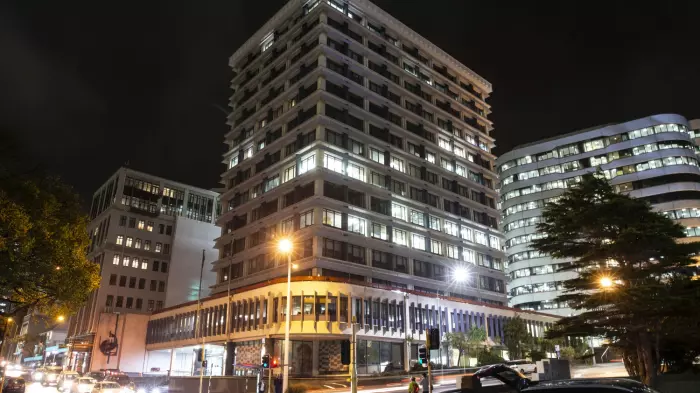The Reserve Bank expects its no-strings-attached $27 billion funding for lending programme to be more effective than Australia’s recent 15-basis point rate cut and economists no longer expect rates to go negative.
“We think it’s larger than shifting the official cash rate from 0.25 percent to 0.1 percent, a la the Reserve Bank of Australia,” governor Adrian Orr told journalists.
“We think it’s a significant impact. We hope it’s as big as possible and that banks actually follow through and deliver on lower interest rates.”
The bank yesterday held the official cash rate at 0.25 percent and announced additional stimulus will be provided through the funding for lending programme. The scheme will kick off in December and will offer banks funds at the prevailing OCR.
The aim is to lower the cost of borrowing for businesses and households, thereby supporting economic activity and employment, as well as helping keep prices stable, it said.
The key success metric of the FLP will be whether it results in a continuing decline in funding costs being passed through as lower household and business borrowing costs.
It said the programme would have an initial allocation of 4 percent of each eligible participant’s total loans and advances to New Zealand households, private non-financial businesses, and non-profit institutions serving households.
A conditional additional allocation of 2 percent of eligible loans will then be made available, for a total size of 6 percent of eligible loans.
Eligible collateral will be high-quality collateral such as New Zealand government bonds, Kauri bonds, and internal residential mortgage backed securities.
No strings
There are few if any strings attached, despite fears the funds will end up further stoking the already hot housing market.
Banks will essentially be free to lend to both business and households.
“There is nothing in particular that targets that lending into businesses. There is an additional, initial allocation which is based around the balance sheet of the bank at the start of the period,” said deputy governor Christian Hawkesby.
“The most powerful channel that these FLP can work through is to give banks confidence to lower those interest rates. The more conditionality, the more complicated these schemes get the less they get taken up and the less effective they can become,” he added.
Hawkesby said the bank believes subdued business lending is largely due to economic uncertainty and “supporting the economy is the best way to resolve that.”
Key for the central bank is how much gets passed on to bank customers, both business and households.
“That’s really how we will be measuring the scheme, as opposed to the size and scale of the take-up,” said Hawkesby.
Negative rates?
When asked if the FLP reduced the need to cut the cash rate into negative territory, Orr said “it’s too early to tell. We want to leave all options open and we will be revisiting that decision at our next monetary policy committee, which is in February of the new year.”
Committee members noted the banking system is on track to be operationally ready for negative interest rates by year end. The committee agreed it was prepared to lower the OCR to provide additional stimulus if required.
The bank’s “unconstrained official cash rate” falls over the coming year but “with domestic demand assumed to be more resilient, the unconstrained OCR falls by less than our baseline scenario from the August statement,” it said.
The unconstrained cash rate is the OCR that would deliver current and expected monetary stimulus in the economy, taking into account unconventional measures.
BNZ head of research Stephen Toplis said “according to the Reserve Bank’s modelling process, the economy currently needs an effective cash rate of minus 150 basis points. Back in August the requirement was minus 240 basis points.”
In other words, the bank thinks conditions have improved sufficiently to require 90 basis points less stimulus than was previously assumed.
This led BNZ to no longer forecast a negative cash rate, but now expect it to remain at 0.25 percent for the foreseeable future.
ANZ Bank also backed away from its rate cut forecast.
“We are now forecasting an RBA-style 15 basis point cut to 0.1 percent at the May MPS, with a highly conditional further 35 basis point cut in August taking the OCR to minus 0.25 percent,” it said.
They were joined by ASB Bank.
“We have nonetheless changed our view on the OCR outlook to expect no further OCR cuts – though the direction of risk will remain firmly in that direction,” it said.
Market pricing
Market pricing also shifted as did interest rate swaps. Two year swap rates rose 5 basis points from 0.13 percent to 0.18 percent, 10yr swap rates rose 6 basis points from 0.74 percent to 0.8 percent.
The bank acknowledged economic activity since the August monetary policy statement, both international and domestic, has proved more resilient than earlier assumed.
However, it noted both headline and underlying inflation were below 2 percent, inflation expectations were subdued, and employment was assessed to be below its maximum sustainable level.
“The covid-19 shock to the economy is very large and persistent, and inflation and employment will remain below the remit targets for a prolonged period. These outcomes are despite the current significant fiscal and monetary stimulus,” it said.
The committee agreed monetary policy will need to remain stimulatory for a long time to meet the consumer price inflation and employment remit “and that it must remain prepared to provide additional support if necessary,” it said.















